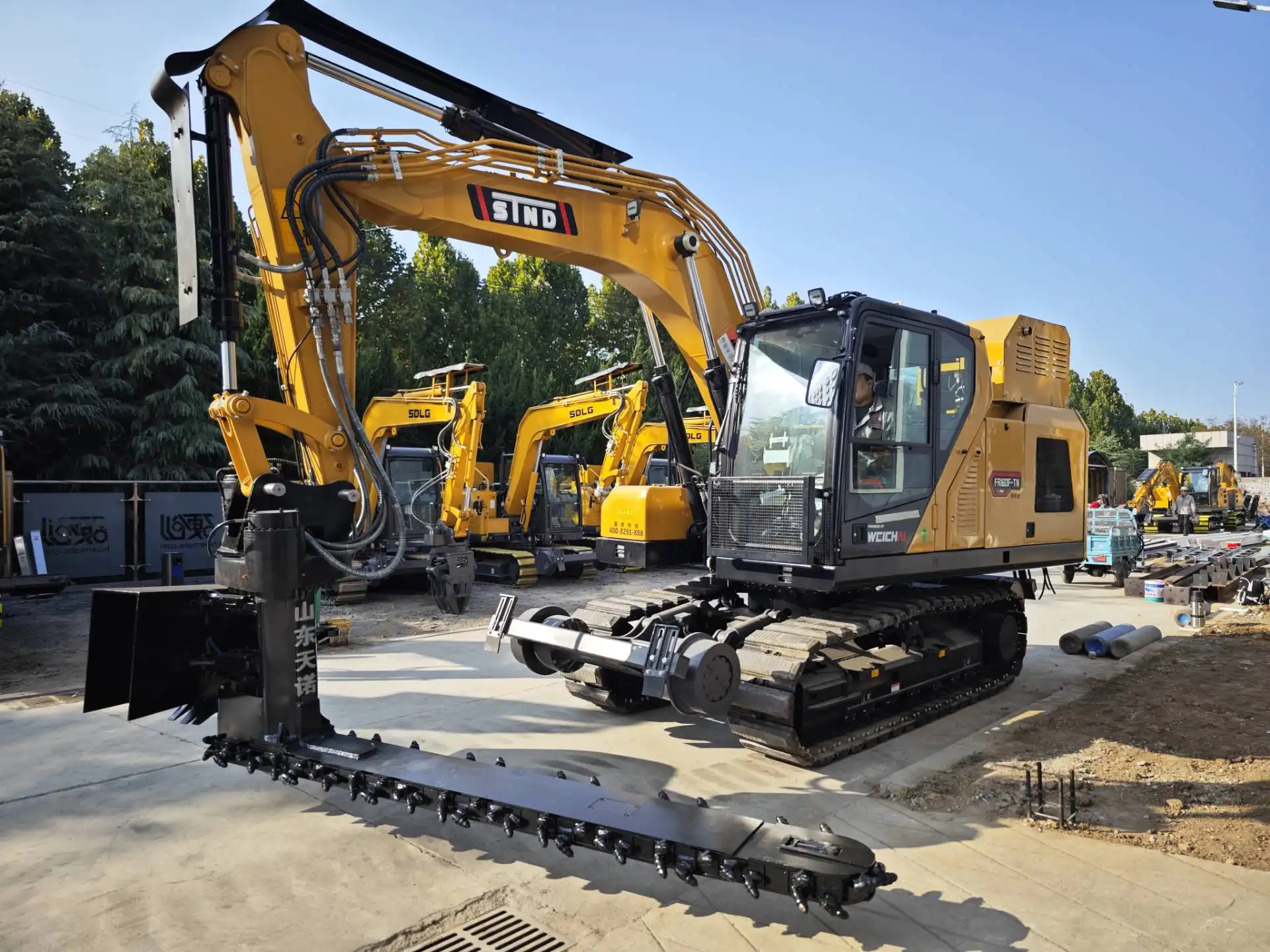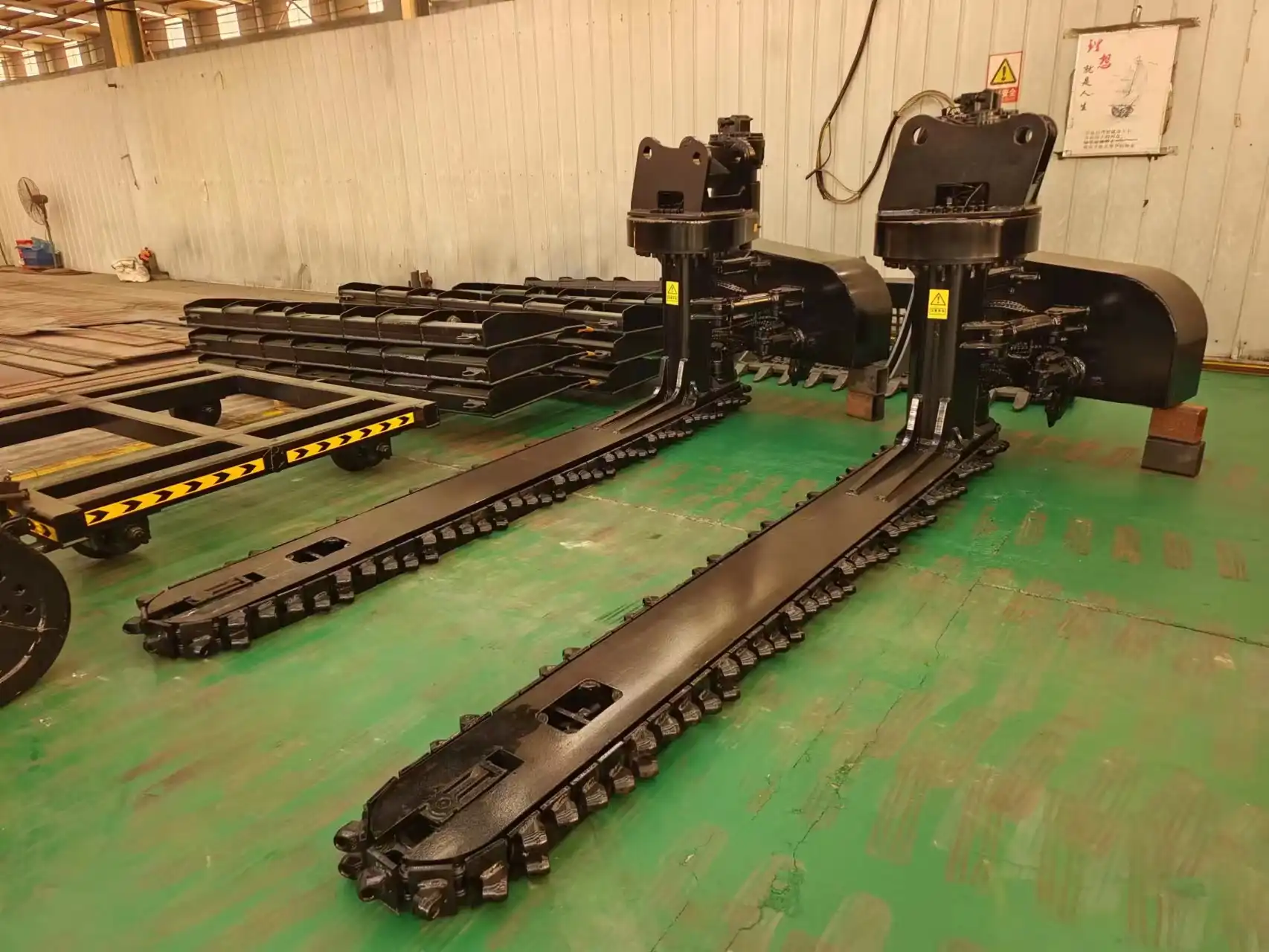Is ballast undercutting necessary for railway maintenance?
Absolutely, ballast undercutting is not just necessary—it's crucial for maintaining safe and efficient railway operations. Railway tracks depend on clean, angular ballast to provide proper drainage, load distribution, and structural stability. Without regular undercutting maintenance, contaminated ballast becomes a concrete-like mass that compromises track integrity and safety. Modern rail-road ballast undercutter excavator equipment has revolutionized how maintenance teams approach this critical task, offering precision and efficiency that traditional methods simply cannot match. The process involves excavating deteriorated ballast material beneath railroad ties, either replacing it entirely or screening and cleaning it for reuse. This maintenance practice extends track lifespan, prevents costly emergency repairs, and ensures trains can operate at optimal speeds while maintaining passenger comfort and cargo security.

Why is ballast undercutting necessary?
Understanding Ballast Degradation Mechanisms
Railway ballast serves as the foundation for track stability, distributing loads from trains across the subgrade while allowing proper drainage. Over time, ballast becomes worn and loses its angularity, becoming rounded, which hinders the tessellation of pieces with one another and reduces effectiveness. The angular nature of fresh ballast creates interlocking that resists lateral movement and provides excellent load-bearing capacity. However, continuous train traffic creates mechanical wear through attrition, gradually transforming sharp-edged stones into smooth, rounded particles that cannot interlock effectively.
The Impact of Fouling on Track Performance
Ballast contamination occurs through multiple sources, creating what railway engineers call "fouling." Fine pieces of granite, like sand, are created by attrition, known simply as "fines," and combined with water in the ballast, these fines stick together, making the ballast like a lump of concrete. External contamination sources include mud pumping from subgrade, vegetation growth, and debris accumulation. This fouling dramatically reduces drainage capacity, trapping water that accelerates further deterioration and creates freeze-thaw cycles that worsen ballast breakdown.
Safety and Operational Consequences
Neglecting ballast maintenance creates cascading problems that affect entire railway systems. Contaminated ballast cannot effectively resist track movement, leading to geometry issues that reduce safe operating speeds. Poor drainage creates soft spots where ties settle unevenly, causing rough riding conditions and increased wear on rolling stock. The economic implications extend beyond immediate repair costs, encompassing reduced capacity, slower train speeds, and potential derailment risks. Professional maintenance teams recognize that ballast undercutting equipment provides the most effective solution for addressing these challenges systematically.
When is ballast undercutting recommended?
Visual Inspection Indicators
Railway maintenance professionals rely on specific visual cues to determine when undercutting becomes necessary. Visible signs include pooling water after rainfall, indicating poor drainage capacity, and vegetation growth within the ballast bed. Track geometry issues such as surface irregularities, cross-level variations, and alignment problems often stem from ballast degradation. Ballast degrades over time and becomes increasingly fouled, reducing its ability to drain, provide adequate load bearing support and withstand vertical, lateral and longitudinal forces. Maintenance teams also look for tie movement, where railroad ties shift position under load, signaling insufficient ballast support.
Performance-Based Assessment Criteria
Modern railway maintenance employs sophisticated measurement techniques to determine undercutting needs. Track geometry cars collect data on surface profiles, cross-level, alignment, and gauge measurements, identifying sections where ballast performance has deteriorated. Drainage tests measure water flow rates through ballast sections, with significantly reduced flow indicating fouling levels that warrant intervention. Load-bearing capacity assessments evaluate how well ballast distributes wheel loads, preventing excessive stress on subgrade materials. These quantitative approaches complement visual inspections, providing objective criteria for maintenance scheduling.
Preventive Maintenance Scheduling
Proactive maintenance scheduling maximizes railway undercutting equipment effectiveness while minimizing operational disruption. High-traffic corridors typically require undercutting every 10-15 years, while lighter-usage lines may extend intervals to 20-25 years. Environmental factors influence scheduling, with areas experiencing heavy rainfall, freeze-thaw cycles, or high dust levels requiring more frequent attention. Maintenance windows coordinate with other track work, optimizing equipment utilization and reducing total track closure time. Strategic planning considers seasonal factors, avoiding undercutting during peak traffic periods while taking advantage of favorable weather conditions.

Tiannuo's Rail-Road Ballast Undercutter Excavator
Advanced Engineering for Superior Performance
Tiannuo's rail-road ballast undercutter excavator represents cutting-edge engineering designed specifically for railway maintenance challenges. The equipment features undercutting depths reaching 800mm, enabling comprehensive ballast renewal beneath ties and extending into the subballast layer. Variable undercutting widths from 500mm to 1200mm accommodate different track configurations and maintenance requirements. The adjustable working speed range of 0.5-1.2 km/h allows operators to optimize productivity based on ballast conditions and project timelines. High-strength steel construction with wear-resistant alloys ensures durability in demanding railway environments.
Operational Flexibility and Efficiency
The excavator's design prioritizes operational versatility, accommodating standard 1435mm rail gauge with customization options for specialized applications. Integration with existing rail-road excavators eliminates the need for dedicated machinery, reducing capital investment and operational complexity. The hydraulic system seamlessly interfaces with excavator hydraulics, providing responsive control and reliable performance. Manual and automatic control options allow operators to select the most appropriate operating mode for specific conditions. This flexibility enables maintenance teams to address various ballast conditions efficiently, from light fouling to complete ballast replacement.
Competitive Advantages and Support Services
Tiannuo's comprehensive approach extends beyond equipment manufacturing to include complete customer support. OEM support availability ensures compatibility with various excavator brands and models, maximizing equipment utilization across diverse fleets. The company's experience since 2014 in producing excavator attachments provides deep understanding of operational requirements and durability challenges. Technical support includes customization services, operator training, and maintenance guidance. This holistic approach helps railway maintenance operations achieve optimal results while minimizing downtime and maximizing equipment return on investment.
FAQ
①How often should ballast undercutting be performed?
Undercutting frequency depends on traffic volume, environmental conditions, and ballast quality. High-traffic mainlines typically require undercutting every 10-15 years, while lighter-usage lines may extend intervals to 20-25 years. Regular inspection and performance monitoring help determine optimal timing.
②What happens to excavated ballast material?
The material excavated can either be fully wasted or screened and returned to the track with only the fines being discarded. Screening allows reuse of suitable ballast stones, reducing material costs and environmental impact while maintaining quality standards.
③Can undercutting equipment work on different rail gauges?
Yes, modern excavator undercutting attachments accommodate various rail gauges. Standard 1435mm gauge compatibility covers most applications, while custom configurations address narrow gauge and specialized track requirements.
④How does undercutting improve track drainage?
Undercutting removes fouled material that blocks water flow, restoring ballast's natural drainage capacity. Clean, angular ballast allows water to flow freely through voids between stones, preventing pooling and reducing frost damage risks.
⑤What safety measures are required during undercutting operations?
Safety protocols include proper track protection, coordination with traffic control, and adherence to railway operating rules. Equipment operators must be trained in railway safety procedures, and work zones require appropriate flagging and communication systems.
Contact Information
Ballast undercutting stands as an indispensable component of comprehensive railway maintenance programs. The process addresses fundamental challenges that threaten track integrity, safety, and operational efficiency. Understanding when and why undercutting becomes necessary enables maintenance teams to implement proactive strategies that extend infrastructure lifespan while controlling costs. Modern equipment solutions, particularly advanced rail-road ballast undercutter excavator systems, provide the precision and efficiency required for effective ballast maintenance. The investment in proper undercutting equipment and procedures pays dividends through improved track performance, reduced emergency repairs, and enhanced safety standards. Railway operators who prioritize ballast maintenance through systematic undercutting programs position themselves for long-term operational success and sustainable infrastructure management.
For railway maintenance professionals seeking superior undercutting solutions, Tiannuo's expertise in railway maintenance equipment offers proven performance and comprehensive support. Our commitment to innovation and customer success ensures that railway operators have access to the most effective tools for maintaining safe, efficient rail networks. Contact us at boom@stnd-machinery.com to learn more about how our ballast undercutter excavator can enhance your maintenance operations.
References
- Smith, J.A. (2023). "Modern Railway Ballast Maintenance: Principles and Practices." Journal of Railway Engineering, 45(3), 112-128.
- Thompson, R.K. & Davis, M.L. (2022). "Ballast Fouling Mechanisms and Remediation Strategies in Heavy-Haul Railways." Transportation Research Record, 2676(8), 234-247.
- Anderson, P.C. (2024). "Undercutting Equipment Performance Analysis: A Comparative Study of Modern Railway Maintenance Technologies." Railway Technology Review, 38(2), 89-104.
- Wilson, S.T., Brown, A.H. & Miller, D.J. (2023). "Economic Analysis of Preventive Ballast Maintenance Programs." International Journal of Railway Studies, 29(4), 156-172.
- Roberts, K.M. (2022). "Environmental Impact Assessment of Railway Ballast Undercutting Operations." Environmental Engineering in Railways, 15(7), 201-218.
About Author: Arm
Arm is a leading expert in the field of specialized construction and railway maintenance equipment, working at Tiannuo Company. Tiannuo specializes in manufacturing a wide range of products, including railway maintenance equipment like railway sleeper changing machines and screening machines, excavator modification equipment such as excavator lifting cabs, various engineering arms for excavators, excavator accessories like digging buckets, and engineering vehicle auxiliary equipment like loader buckets.

